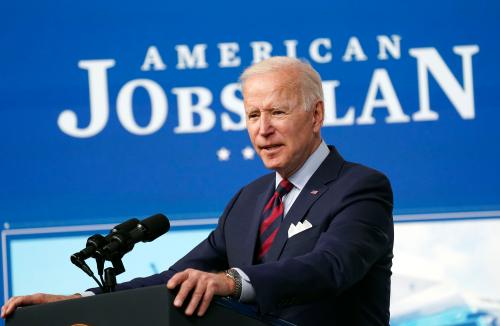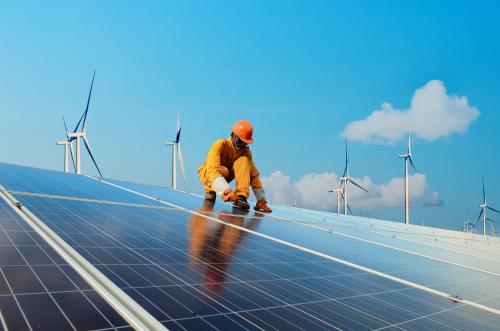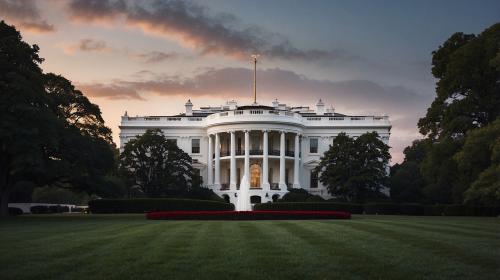President Joe Biden’s infrastructure plan has generated a lot of buzz inside and outside Washington. It is big and ambitious, looking to invest more than $2 trillion over eight years across a range of projects, including a focus on climate action and environmental justice. Electric vehicle charging stations and a modernized electric grid have dominated headlines.
Getting less attention, though, is one of the most environmentally and economically significant proposals: $213 billion to “produce, preserve, and retrofit more than two million affordable and sustainable places to live.” It’s a big investment in housing that prioritizes the needs of those who can often least afford it and who struggle amid a changing climate.
As February’s Texas freeze highlighted, improving the resilience of our buildings and homes matters to our health, environment, and economy. The use of energy-efficient materials and other flexible, durable upgrades—including weatherization—can reduce climate risks and costs. Doing so can also promote a safer, more equitable environment, particularly for lower-income households and communities of color who are often most vulnerable to climate change.
Biden’s plan aims to improve homes in several ways, from zoning changes to rehabilitating housing in distressed neighborhoods. Boosting the energy efficiency of homes and reducing energy costs are also central parts of the plan, building off of the Department of Energy’s weatherization assistance efforts, which aim to reduce energy consumption and improve energy performance in lower-income households. A challenge with existing assistance efforts is the lack of geographic scale and funding; only about 2% of the 38.6 million eligible low-income homes are weatherized each year, despite the benefits.
As shown in the graphic below, a variety of retrofits and installations—including better insulation and more efficient appliances—can lead to average annual energy cost savings of $283 per household. Additionally, every $1 invested in weatherization assistance produces $2.78 in non-energy benefits, including improved health and safety.

Weatherizing homes is not a new priority; Biden advanced such a strategy a decade ago during the Great Recession when he was vice president. And for good reason: Residential energy use accounts for roughly 20% of greenhouse gas (GHG) emissions in the U.S. But weatherizing homes isn’t just about climate benefits—it can boost energy affordability for those most in need too.
Low-income households struggle with high energy costs. As highlighted by the American Council for an Energy-Efficient Economy, low-income households (those with incomes less than or equal to 200% of the federal poverty level) spend 8.1% of their income on energy costs, compared to 3.1% for households at the median. The situation is even more dire for low-income households with seniors (9.3% of income) and those with disabilities (8.7%). Low-income households with young children do not fare much better, spending 7.1% of their income on energy costs.

Energy affordability challenges also vary by race, as evident during recent power failures. Native American households face the highest energy burdens, with energy costs accounting for 4.2% of their income, or 1.5 times those of white households (2.8%). Black (4.1% of income) and Latino or Hispanic households (3.5%) shoulder high energy costs too, revealing widespread affordability struggles in communities already grappling with high levels of pollution and other environmental injustices.

Weatherizing millions of homes across the country can address these affordability concerns by lowering energy consumption to achieve energy and cost savings. While other federal efforts such as the Low Income Home Energy Assistance Program (LIHEAP) offer targeted assistance to vulnerable households, we need to reach more people and places by embedding improvements throughout our built environment. Communities need to plan, design, and invest more consistently in climate resilience over time, with federal technical and financial support.
Many regional initiatives that reveal the potential for more widespread weatherization are already underway. For instance, as part of its Climate Action Plan, Minneapolis is not only better measuring and mitigating GHG emissions across different buildings, but also reducing household energy burdens in the neighborhoods of greatest need. Similar plans have emerged in Seattle, Atlanta, and Philadelphia, including incentives to help lower-income households, create more sustainable building ordinances, and strengthen green building standards. New Orleans has coordinated with energy utilities to educate residents and incentivize weatherization upgrades. And state-level weatherization assistance programs in California, Texas, and Florida continue to accelerate home energy efficiency and energy affordability.
The fate of Biden’s infrastructure plan is unknown, but the push toward improving energy equity across the country is a worthy goal. Several congressional proposals have come out in support of increased weatherization assistance, with new ways to allocate funding to those need. Home weatherization may not be as visible as other infrastructure projects, but it can lead to lasting, ground-up improvements in environmental and economic resilience—and represent the types of future-looking steps the country needs to take in the years to come.
The Brookings Institution is committed to quality, independence, and impact.
We are supported by a diverse array of funders. In line with our values and policies, each Brookings publication represents the sole views of its author(s).







Commentary
Weatherizing homes could be one of the most vital legacies of Biden’s infrastructure plan
April 22, 2021